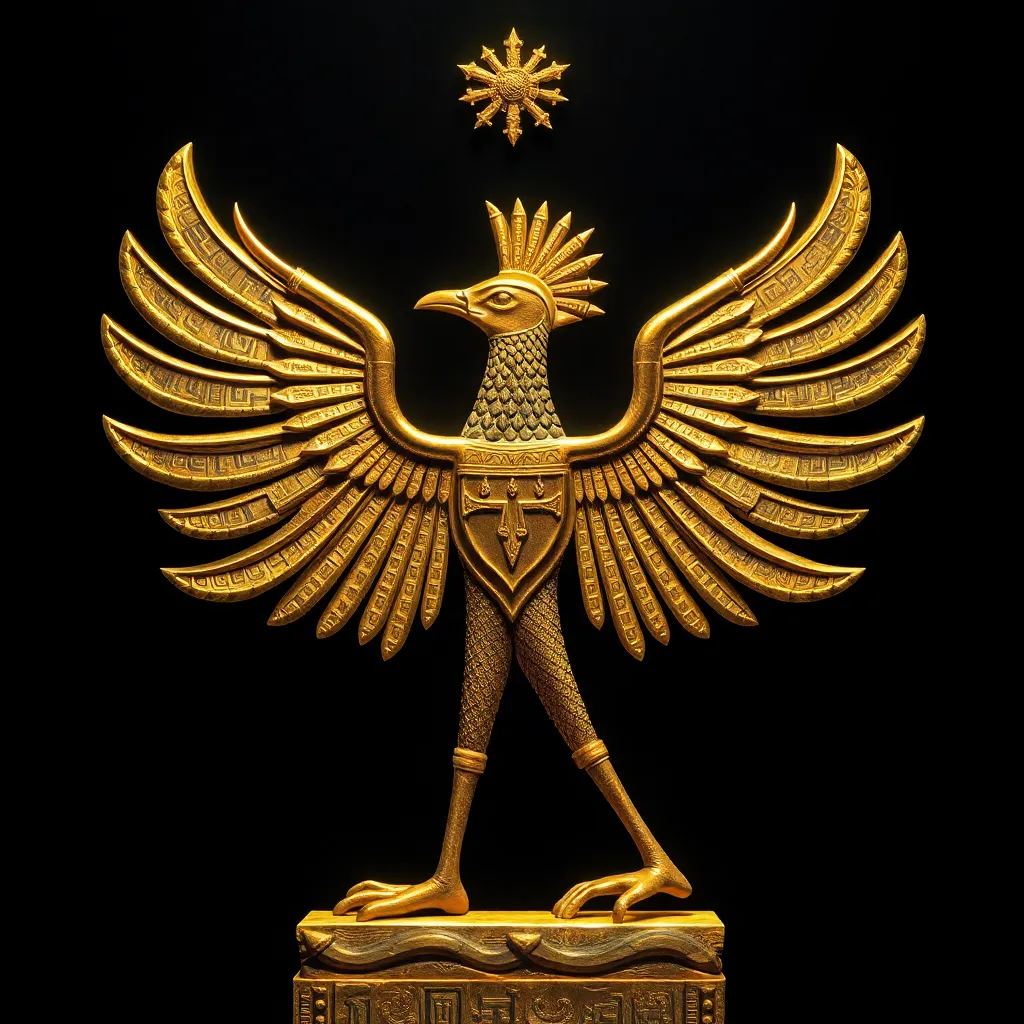The Bennu Bird: A Representation of Cosmic Balance
I. Introduction
The Bennu Bird is a fascinating and significant figure in ancient Egyptian mythology, often associated with themes of creation, rebirth, and cosmic balance. Represented as a heron or a sacred bird, the Bennu Bird embodies the duality of life and death, reflecting the cyclical nature of existence. This article will explore the origins, cultural significance, and modern interpretations of the Bennu Bird, highlighting its role in representing cosmic balance across various contexts.
II. Origins of the Bennu Bird
The historical significance of the Bennu Bird in ancient Egyptian mythology cannot be overstated. It is believed to have emerged from the primordial waters of chaos, symbolizing the emergence of order from disorder. The Bennu is closely associated with the sun god Ra, often depicted rising with the sun or representing the cycle of day and night.
As a symbol of rebirth and renewal, the Bennu Bird was thought to undergo a transformative process akin to the cycle of the seasons. This connection to the sun and the regenerative processes of nature further cements its role as a powerful emblem of cosmic balance.
III. The Bennu Bird in Egyptian Culture
The Bennu Bird was not only a mythological figure but also a prevalent motif in ancient Egyptian art and hieroglyphics. It is often depicted in tomb paintings and inscriptions, serving as a protective symbol for the deceased in their journey to the afterlife.
- Depictions in Art: Artists represented the Bennu Bird with distinct features, often showcasing its vibrant plumage and majestic stature.
- Funerary Practices: The Bennu was integrated into various funerary rituals, symbolizing resurrection and the hope for eternal life.
- Influence on Cosmology: The bird’s association with creation myths highlights its importance in the broader context of Egyptian cosmology, where it symbolizes the harmony between life and death.
IV. The Concept of Cosmic Balance
Cosmic balance refers to the equilibrium between opposing forces in the universe, a concept prevalent in many mythologies. In the Egyptian context, this balance is often represented through the cyclical nature of life, death, and rebirth.
When comparing the Egyptian perspective with other cultures, we find similar themes:
- Chinese Philosophy: The concept of Yin and Yang illustrates the balance between opposing forces, much like the duality represented by the Bennu.
- Hinduism: The cycles of creation and destruction are embodied in deities such as Shiva, reflecting the interconnectedness of life and death.
The Bennu Bird plays a crucial role in maintaining cosmic order, serving as a reminder of the need for balance in all aspects of existence.
V. The Bennu Bird and Its Symbolic Meanings
The symbolism of the Bennu Bird extends beyond mere representation in mythology. It encapsulates profound themes, including:
- Connection to Fire: Often associated with the sun, the Bennu is linked to the transformative power of fire—both a creator and a destroyer.
- Duality of Life and Death: The Bennu embodies the cycle of life, illustrating that death is not an end but a transition to new beginnings.
- Resilience and Transformation: The ability of the Bennu to rise from its ashes serves as a powerful metaphor for overcoming adversity and embracing change.
VI. Modern Interpretations of the Bennu Bird
In contemporary society, the Bennu Bird continues to inspire artists, writers, and spiritual seekers. Its symbolism is reflected in various forms of modern expression:
- Influence on Art and Literature: The themes of rebirth and transformation associated with the Bennu have been explored in numerous artistic and literary works.
- Modern Spirituality: The Bennu Bird has found a place in various spiritual practices, symbolizing personal growth and renewal.
- Environmental Movements: As a symbol of resilience, the Bennu is often invoked in discussions about ecological balance and sustainability.
VII. The Bennu Bird in Popular Culture
The Bennu Bird has made its mark in popular culture, appearing in various forms of media:
- Films and Books: The Bennu has inspired characters and narratives in films and literature, often representing themes of resurrection and hope.
- Video Games: The bird’s symbolism has been incorporated into game design, often as a representation of life cycles or rebirth mechanics.
- Cultural Events: Festivals and celebrations that honor themes of rebirth and renewal frequently reference the Bennu as a symbol of new beginnings.
VIII. Conclusion
In conclusion, the Bennu Bird serves as a powerful representation of cosmic balance, illustrating the interconnectedness of life, death, and renewal. Its significance in ancient Egyptian mythology has endured through the ages, inspiring modern interpretations that resonate with contemporary themes of resilience and transformation. As we reflect on the enduring legacy of the Bennu Bird, we are encouraged to explore our own interpretations of balance in life, embracing the cycles that define our existence.




